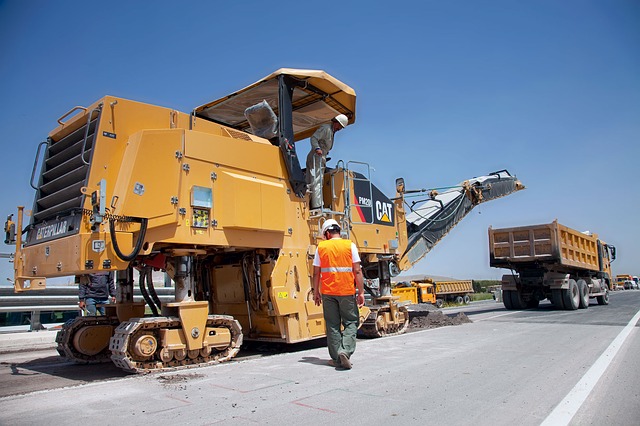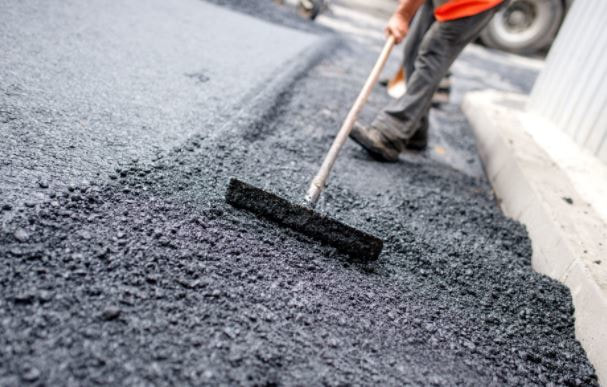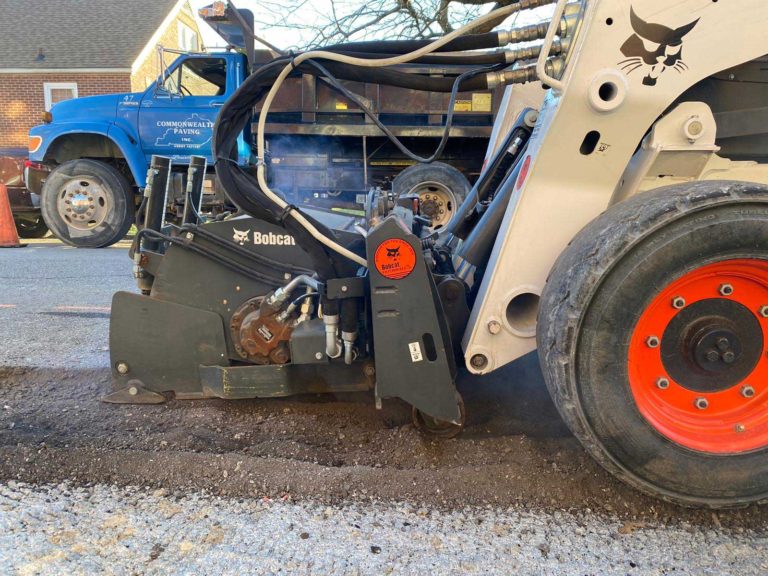When you drive on the road, you expect a smooth journey. But have you ever wondered how roads stay smooth and safe? That’s where a process called milling comes into play. Milling is like giving roads a makeover, making them smoother and better for everyone. In this guide, we’ll explore why milling is important for smoothing the way and how it transforms bumpy roads into smooth paths.
Understanding Milling
Milling is like a special treatment for roads. It’s used to fix roads that have become bumpy, cracked, or worn out over time. This process involves removing the top layer of the road surface, which is often damaged or uneven. Once the damaged layer is gone, a fresh layer of new asphalt is added, creating a smoother road.
- Fixing Bumps and Cracks
One of the main reasons milling is important is that it fixes bumps and cracks on the road. Over time, roads can develop bumps and holes due to traffic, weather, and other factors. These bumps can make driving uncomfortable and even dangerous. Milling removes these bumps and leaves behind a smooth surface, making driving safer and more enjoyable.
- Creating a Level Surface
Milling is all about creating a level surface for vehicles to travel on. Uneven roads can cause vehicles to bounce and sway, which isn’t good for drivers or their cars. By removing the damaged top layer of the road, milling creates a level and even surface. This makes driving smoother and helps vehicles stay in control.
- Improving Traction
A smooth road provides better traction for vehicles. Traction is what keeps vehicles from sliding or skidding. Milling enhances traction by removing worn-out and slippery surfaces. With improved traction, drivers can brake, turn, and accelerate more safely, especially in wet or slippery conditions.
- Enhancing Safety
Milling plays a big role in making roads safer. When roads are bumpy or have cracks, it can lead to accidents. Drivers might lose control or have trouble maneuvering around obstacles. Milling fixes these issues, reducing the risk of accidents and making roads safer for everyone on them.

- Increasing Longevity
Just like how a good makeover can make you feel better, milling gives roads a new lease on life. By removing the damaged surface and adding fresh asphalt, roads become stronger and more durable. This means they can withstand more traffic and last longer before needing repairs again.
- Saving Money
Milling might sound like a big process, but it’s actually a cost-effective way to improve roads. Instead of tearing up the whole road and starting from scratch, milling only removes the top layer. This saves time, materials, and money while still delivering great results.
- Environmental Benefits
Milling is also good for the environment. By recycling the old asphalt that’s removed during the process, less new material needs to be mined or produced. This reduces the impact on the environment and makes milling an eco-friendly choice.
- Smoother Rides for Everyone
Ultimately, the importance of milling boils down to providing smoother rides for everyone. Whether you’re driving to work, school, or anywhere else, a smooth road makes the journey more comfortable. Milling ensures that roads stay in good shape, so you can enjoy a pleasant and safe drive.
Conclusion: Paving the Path to Smoother Journeys
Milling is like a makeover for roads – it transforms bumpy and damaged surfaces into smooth paths for drivers. By fixing bumps, creating level surfaces, improving traction, enhancing safety, increasing longevity, saving money, and benefiting the environment, milling plays a crucial role in making roads better. So, the next time you experience a smooth drive, remember that milling is working behind the scenes to provide you with a comfortable and safe journey on the open road.
The Magic of Asphalt Milling in Bumpy to smooth road
Imagine driving down a road full of bumps and cracks – it’s not the most pleasant experience, right? But what if there was a way to magically transform those bumpy roads into smooth paths? That’s where asphalt milling comes in. This process works like magic to make roads better and safer for everyone. In this guide, we’ll unravel the magic of asphalt milling and how it turns bumpy roads into smooth journeys.
Understanding Asphalt Milling
Asphalt milling is a bit like giving a tired road a new lease on life. It’s a process where the top layer of a road’s surface, which has become damaged or uneven, is removed. Once this old layer is gone, fresh asphalt is added, creating a smooth and revitalized road.
- The Bumpy Road Challenge
Bumpy roads are more than just uncomfortable – they can be dangerous too. Those bumps and cracks can make driving tricky, causing vehicles to bounce and lose control. They can even damage cars over time. Asphalt milling is the solution to this challenge, as it smoothens out the road’s surface.
- The Milling Magic
So, how does asphalt milling work its magic? First, specialized machines with rotating drums equipped with cutting teeth go to work. These cutting teeth shave off the damaged surface layer of the road. Think of it like giving the road a fresh haircut – removing the split ends and making it look healthier.
- Revealing a Fresh Layer
Once the old, damaged layer is gone, what’s left is a fresh layer that’s ready for a makeover. This new layer is prepared for the next step – adding a layer of new asphalt that will create a smooth and renewed road surface.
- Smoothing Out the Imperfections
After the new asphalt layer is added, it’s compacted and smoothed out. This process eliminates any remaining imperfections, creating a surface that’s not only smooth but also safe to drive on. No more jarring bumps or uncomfortable rides!

- Benefits for Drivers
Asphalt milling brings a bundle of benefits for drivers. A smooth road means a comfortable ride. Your vehicle won’t bounce around, and you’ll have better control. Imagine driving without that constant up-and-down movement caused by bumps – it’s a much more enjoyable experience.
- Boosting Road Safety
Beyond comfort, asphalt milling boosts road safety. Smooth roads are safer roads. With no surprises like sudden bumps or cracks, drivers can focus on the road ahead. This reduces the risk of accidents and keeps everyone on the road safer.
- Extending Road Lifespan
Roads go through a lot – from heavy traffic to changing weather conditions. Asphalt milling helps extend the lifespan of roads. By removing the damaged top layer and adding new asphalt, the road becomes stronger and more resilient, lasting longer before needing repairs.
- An Eco-Friendly Choice
The magic of asphalt milling isn’t just about roads – it’s about the environment too. Milling is a sustainable choice because it recycles the old asphalt that’s removed. This means fewer resources are used, making it a greener option for road improvement.
Milling stands as a pivotal process in the realm of road enhancement. Through the removal of deteriorated surfaces and the subsequent application of new asphalt layers, milling breathes life into roads, rendering them smoother, safer, and more enduring. This practice not only elevates driving comfort but also amplifies road safety, while simultaneously playing a role in environmental sustainability through material recycling. The essence of milling lies in its capacity to rejuvenate weary roads, effectively forging a path towards more superior and enriching journeys.
Roads, much like any infrastructure, undergo a natural cycle of wear and tear over time. Cracks, potholes, and uneven surfaces emerge due to the continuous interaction with weather elements, fluctuating temperatures, and the constant onslaught of vehicular traffic. This progressive degradation not only compromises the aesthetics of roads but also jeopardizes the safety of commuters.
Enter milling, a transformative process that addresses these issues head-on. Employing specialized machinery equipped with rotating drums or cutting teeth, the process removes the compromised top layer of the road. This action effectively strips away the worn-out surface, akin to peeling away the layers of an aging canvas to reveal the vibrant hues beneath.
Conclusion: Paving the Way to Smooth Journeys
Asphalt milling is more than just a process – it’s a bit of magic that turns bumpy and worn-out roads into smooth paths for drivers. With its ability to fix challenges like bumpy roads, boost safety, extend road lifespan, and be eco-friendly, asphalt milling is a superhero in the world of road improvement. The next time you experience a smooth drive, remember that it’s the magic of asphalt milling that’s creating those comfortable and safe journeys on our roads.
The Role of Milling in Asphalt Rehabilitation
Have you ever wondered how old and worn-out roads get a new lease on life? The answer lies in a remarkable process called asphalt milling. This process plays a crucial role in rehabilitating asphalt surfaces, turning deteriorated roads into smooth and durable pathways. In this guide, we’ll delve into the role of milling in asphalt rehabilitation and how it transforms worn-out roads into refreshed and functional ones.
Understanding Asphalt Milling
Asphalt milling is like giving a tired road a makeover. It’s a method used to rehabilitate roads that have seen better days. This process involves removing the top layer of damaged or deteriorated asphalt and replacing it with fresh material, effectively renewing the road’s surface.
- Reversing the Aging Process
As time goes by, roads face wear and tear from heavy traffic, weather changes, and other factors. These factors can lead to cracks, potholes, and an overall uneven surface. Asphalt milling steps in as a solution to reverse the aging process of roads, giving them a second chance at smoothness and functionality.
- The Milling Process
The process of asphalt milling is quite fascinating. Specially designed machines equipped with cutting teeth or rotating drums go to work. These cutting teeth grind and remove the damaged top layer of the road, much like peeling away the outer layer of an onion. This process leaves a clean and prepared surface for the next steps.
- Preparing for Resurfacing
Once the old layer is removed, the road is prepared for resurfacing. This involves adding a new layer of asphalt that will create a fresh and even surface. The combination of milling and resurfacing effectively gives the road a brand-new appearance and functionality.
- Addressing Imperfections
One of the remarkable roles of asphalt milling is its ability to address imperfections. Cracks, potholes, and uneven surfaces are smoothed out during the milling process. This results in a rejuvenated road that not only looks better but is also safer and more comfortable for drivers.

- Boosting Road Safety
Safety is a top priority when it comes to road rehabilitation. Asphalt milling contributes significantly to road safety. By eliminating hazards such as potholes and cracks, milling creates a smoother and more predictable driving surface. This reduces the risk of accidents and ensures a safer journey for all road users.
- Enhancing Longevity
Roads aren’t just about the present – they’re an investment in the future. Asphalt milling enhances the longevity of roads by removing the damaged top layer and replacing it with fresh asphalt. This makes the road more durable and capable of withstanding the challenges of heavy traffic and changing weather conditions.
- Saving Time and Resources
Asphalt milling is not only effective, but it’s also efficient. It saves time and resources compared to tearing up and rebuilding entire roads. By targeting the top layer, milling minimizes the disruption caused to traffic and reduces the amount of new material needed.
- Environmental Considerations
Milling also shines in terms of environmental considerations. By recycling the old asphalt that’s removed during the process, the need for new raw materials is reduced. This eco-friendly approach contributes to sustainability and a reduced carbon footprint.
Conclusion: Resurrecting Roads with Milling
Asphalt milling isn’t just about fixing roads – it’s about resurrecting them. By reversing the effects of wear and tear, addressing imperfections, enhancing safety, extending road lifespan, and being environmentally conscious, milling plays a pivotal role in asphalt rehabilitation. So, the next time you drive on a smooth and renewed road, remember that it’s the result of the remarkable process of asphalt milling, breathing new life into our aging roadways.
How Milling Paves is good option for the Better Roads
Have you ever wondered how roads that have seen better days get a fresh start? The answer lies in a powerful process known as milling. Milling isn’t just about fixing roads – it’s about paving the way for better, safer, and more comfortable journeys. In this guide, we’ll explore how milling works its magic to transform worn-out roads into renewed and improved pathways.
Understanding Milling
Milling is like giving a road a makeover. It’s a method used to rejuvenate roads that have become rough, cracked, or damaged. The process involves removing the top layer of the road’s surface, which is usually worn and uneven. After that, a new layer of asphalt is applied, creating a smoother and refreshed road.
- A Fresh Start for Roads
Just like we all appreciate a fresh start, roads also benefit from one. Over time, roads can develop cracks, potholes, and other imperfections. These issues can make driving uncomfortable and even hazardous. Milling steps in to provide that much-needed fresh start by removing the damaged layer and giving the road a clean slate.
- The Role of Milling Machines
Milling machines are the superheroes of this process. They are equipped with special rotating drums or cutting teeth that grind away the old, damaged layer of the road. Think of it as peeling away the outer layer of an onion to reveal the fresh layers underneath.
- Creating a Smooth Surface
Once the old layer is removed, what’s left is a smooth surface ready for a new layer of asphalt. This fresh layer will cover up any remaining imperfections, creating a road that not only looks better but also feels better to drive on.
- Safety at the Forefront
Safety is a top priority when it comes to roads. Milling plays a critical role in enhancing road safety. By removing hazards like cracks and potholes, milling creates a smoother and more predictable driving surface. This reduces the risk of accidents and ensures a safer journey for everyone on the road.
- Comfortable Driving Experience
We all appreciate a smooth ride, whether in a car, bus, or bicycle. Milling provides that comfort by eliminating the jarring effects of bumps and cracks. A well-milled road ensures that vehicles can glide along without unnecessary jolts or discomfort.
- Extending Road Lifespan
Roads endure a lot – from heavy traffic to changing weather conditions. Milling helps extend the lifespan of roads. By removing the worn-out top layer and adding fresh asphalt, the road becomes stronger and more resilient, capable of handling the challenges of everyday use.
- Cost-Effective Solution
Milling not only improves roads but also does so in a cost-effective way. Rather than completely rebuilding roads from scratch, which can be expensive and time-consuming, milling targets the problem areas and focuses on what needs improvement.
- Environmental Benefits
Milling also has a positive impact on the environment. By recycling the old asphalt that’s removed during the process, the need for new raw materials is reduced. This environmentally conscious approach aligns with the goal of sustainability.
Conclusion: Reshaping Roads for the Better
Milling is a powerful process that reshapes roads for the better. By providing a fresh start, enhancing safety, offering a comfortable driving experience, extending road lifespan, and being cost-effective and environmentally friendly, milling truly paves the way for improved roadways. The next time you enjoy a smooth drive, remember that it’s the result of the remarkable process of milling, transforming worn-out roads into the pathways of the future.
Address
Commonwealth Paving, 136 Outerloop, Louisville, Kentucky 40214
Phone: 502-459-7283, Fax: 502-456-2678
Opening Hours
| Monday | 9:00 AM – 5:00 PM |
| Tuesday | 9:00 AM – 5:00 PM |
| Wednesday | 9:00 AM – 5:00 PM |
| Thursday | 9:00 AM – 5:00 PM |
| Friday | 9:00 AM – 5:00 PM |
| Saturday | Closed |
| Sunday | Closed |






